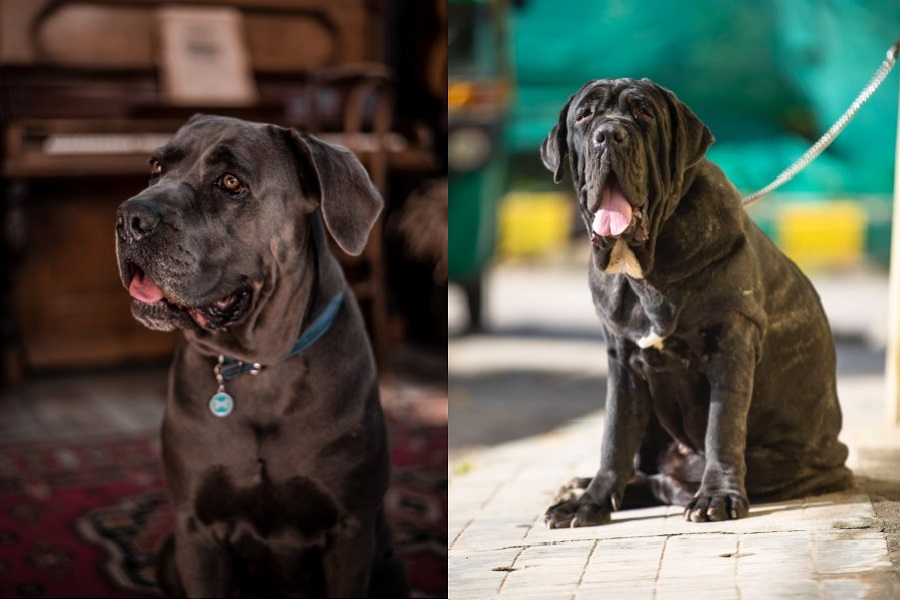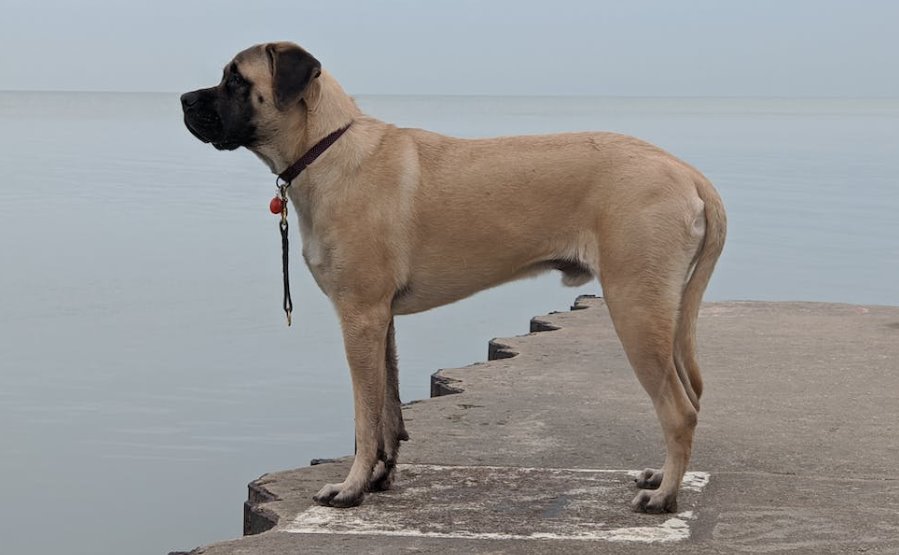Cane Corso vs Neapolitan Mastiff

If you’re looking to adopt or buy a large dog breed, you’ve likely considered a Mastiff dog among your choices. The Cane Corso and Neapolitan Mastiff breeds make fantastic family pets, and while they share common characteristics, there are significant differences worth considering before you decide which puppy is best for your home.
What Do the Neapolitan Mastiff and the Cane Corso Have in Common?
These two large breed dogs are similar in size, much like the Great Dane, Tibetan Mastiff, Pitbull, English Mastiff, and other giant dogs. Of the two breeds, the Neapolitan Mastiff is bigger, while the Cane Corso is considered more robust.
While both dogs are fiercely loyal and protective, they have temperaments that can be difficult, which can make obedience training a challenge. If you have experience with large breed dogs or hire a professional trainer, you’ll find it’s easier to get acquainted with the nature of the Neapolitan Mastiff and the Cane Corso.
Neapolitan Mastiff History and Characteristics
The Neapolitan Mastiff comes from the Naples region of Italy and originated from Roman war dogs. This Mastiff was bred to work as a guard dog to protect families, properties, and farms. The dog’s loose, wrinkly skin provides a layer of protection when attacked by another animal.
When this Mastiff breed is born, they typically have blue eyes, which change in color as they mature, changing to brown or amber. Also known as the Mastino Napoletano, this giant breed comes with a variety of nose colors, including brown, black, and blue.
Neapolitan Mastiffs weigh between 110 and 150 pounds, and their height ranges from 24 to 30 inches. In some cases, this dog may grow taller based on family history and environment. There are four natural coat color shades for this large breed family dog: black, tawny, blue, and mahogany.
While a Neapolitan Mastiff’s serious, mischievous nature contributes to their temperament, this large breed is generally gentle and enjoys socializing. If you have children or other pets, it’s best to train a Neapolitan Mastiff as a puppy, with supervision, so they can be introduced to their new companions and learn to enjoy their company.
Cane Corso History and Characteristics
The Cane Corso dog is a bit smaller and lighter than the Neapolitan Mastiff and typically weighs around 120 pounds on average. This breed stands at a height between 23 and 28 inches, and the overall shape of Cane Corsos is rectangular and muscular.
The ancestry of this dog originates from Tibet, though they are known as an Italian breed that was similarly bred to the Neapolitan Mastiff as Roman dogs. The Cane Corso breed makes great hunting dogs and works as a guard or farmhand. This big dog is exceptionally strong and is known for hunting large animals, such as wild boars.
This breed’s coat varies from the Neapolitan Mastiff and comes in a variety of colors, including fawn, gray, black, red, black brindle, and gray brindle. Their eyes are typically brown, and their noses are either brown or black. This Italian breed is well-known for its intelligence and protective nature.
Cane Corsos are confident and loyal and tend to display a stable temperament. Like the Neapolitan Mastiff puppy, Cane Corso puppies require training early to learn proper behaviors and understand boundaries. They respond well to positive reinforcement and require monitoring when they’re puppies to prevent accidents.

Health Conditions in Mastiff Breeds and the Cane Corso
Generally, both large breeds are healthy, powerful dogs, but some conditions are common to both breed types. Neapolitan Mastiffs can be prone to eye problems, dental disease, hip dysplasia, and thyroid issues.
The Cane Corso breed is prone to hip dysplasia, eyelid abnormalities, cherry eye, and bloat. Since every dog breed has common health risks, proper veterinarian care and regular checkups can prevent illnesses and provide early treatment.
Grooming Requirements for the Neapolitan Mastiff and Cane Corso Breeds
Mastiffs are easy to groom, requiring a bath only once every six to eight weeks. Between bathing and grooming is a simple procedure for a Neapolitan Mastiff, combing your pet’s coat to reduce shedding. It’s essential to have your big dog regularly checked for overgrown nails and trimmed and to ensure their teeth and ears are clean and healthy.
Cane Corso dogs are similarly easy to care for and require minimal grooming, as their coat is short, and shedding isn’t as severe. You’ll notice some fur may become loose, and combing can quickly remove and prevent hairs from falling and sticking to furniture. Like the Mastiff, the Cane Corso breed requires regular checkups for their teeth and ears to ensure their nails don’t overgrow.
Which Breed Is the Best Option?
Cane Corso and Neapolitan Mastiff breeds are giant dog breeds that provide fantastic family pets. They are friendly, loyal dogs that share many similarities with a few differences. Cane Corso dogs are strong and slightly smaller in size.
The type of dog you buy or adopt for your household depends on what’s best for your family and home. While Mastiff dogs are larger in size and considered gentle giants, Cane Corsos are a bit stronger and ideal as working dogs. Each breed is best suited for large spaces, where they can frequently access the outdoors for exercise, play, and socialization.
The best dog breed for your home depends on personal preferences, appearance, characteristics, and behavior.
If you’re considering a Neapolitan Mastiff or Cane Corso puppy, research reputable breeders in your area and schedule a visit to determine which dog breed is a good fit. While both dogs are similar breeds in many ways, it’s essential to take time and effort to find the right pet that suits your home and family well.
